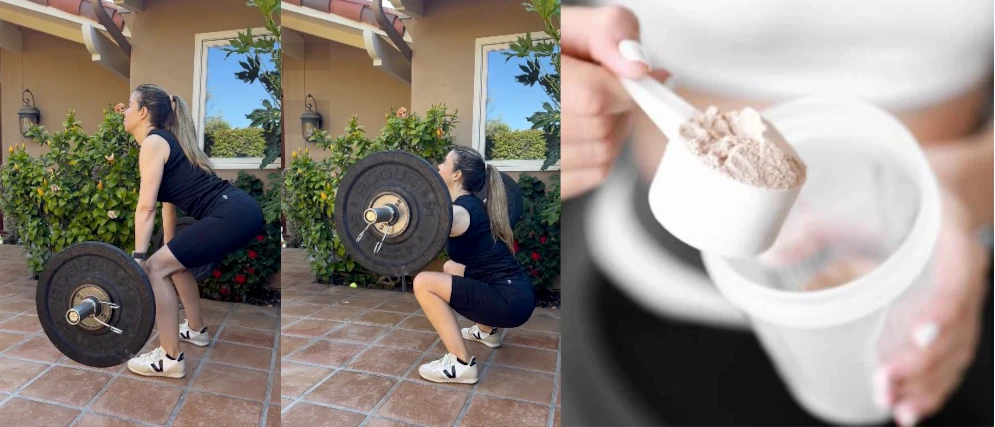In this post we’ll run through the following:
- What sulforaphane is, and why it’s of interest
- How Rhonda sprouts broccoli seeds for their sulforaphane content
- The sulforaphane supplements Rhonda takes
- Moringa, and why she started taking it

The What & Why of Sulforaphane
Plants contain chemicals that are used for their self-defense (phytochemicals). Generally, plants evolved these chemicals to be toxic to organisms smaller than humans (for example pathogens). Thus, what may be toxic to a pathogen, has a lesser effect on a human. In small amounts, some of these phytonutrients exhibit positive effects in humans. But if you consume them in high amounts; they become toxic. This is referred to as hormesis, or, the hormetic effect – and is illustrated by the image below:
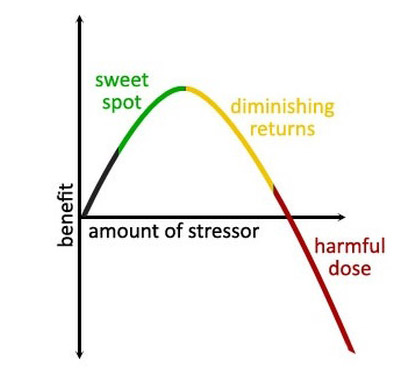
Bringing this back to sulforaphane, which is a product of a chemical reaction between glucoraphanin and myrocinase, the glucoraphanin itself is a plant-based phytonutrient that triggers a positive hormetic affect in humans.
Specifically, ingested sulforaphane activates what’s called the NRF2 pathway, which increases the expression of a battery of cell protective genes, that regulate things like:
- Glutathione (GSH) – Essential in the function of Glutathione peroxidase and GST for redox balance and detoxification.
- Haemoxygenase-1 (HO-1) – Redox-regulating, broad protection against oxidative stress. Anti-inflammatory and immune-modulating properties.
- Quinone reductase (NQO1) – A multifunctional redox-regulating and detoxifying enzyme, including protection against estrogen quinone metabolites. Stabilises the p53 tumor suppressor protein.
- Metallothionein – Removal of heavy metals such as mercury and cadmium.
- Peroxisome proliferator-activated receptor – Regulator of adipogenesis and central integrator of glucose metabolism, energy homeostasis, and skeletal metabolism.
And that’s just a snapshot, NRF2 affects even more. This information comes from an incredible paper by Christine Houghton et al. (source) – which is highly worth reading.

As a result, sulforaphane is under continued study for its potential role in life extension, cancer prevention and more.
Sulforaphane and the Immune System
Recently, with immune function in mind, Rhonda’s been encouraged by a randomized double-blinded study that found sulforaphane from broccoli sprouts increased the body’s immune function against the influenza virus1Effect of Broccoli Sprouts and Live Attenuated Influenza Virus on Peripheral Blood Natural Killer Cells: A Randomized, Double-Blind Study – Müller et al. (2016). Specifically, it increased Natural Killer cells production of an enzyme that may enhance antiviral defense responses.
To learn more about Sulforaphane, see Rhonda’s highly detailed video on the subject.
Whilst the ultimate low-cost alternative to high end sulforaphane supplements is sprouting your own (see below), often this can be inconvenient. It takes time, preparation, and isn’t always possible when traveling or busy with work.
Since Rhonda had a child, her time is more limited, and at least for now she is opting to take sulforaphane as a supplement – rather than sprouting her own.
Below we’ll look at the best sulforaphane supplements on the market.

Self Grown Broccoli Sprouts
When Rhonda has the time, she opts to get her sulforaphane through self-grown broccoli sprouts. Sprouts are easy to grow with a bit of initiative. To emulate Rhonda’s exact broccoli sprout growing setup you’ll want:
- Ball Mason jars – specifically quart size, wide mouth
- Sprouter lids – wide mouth to fit the Ball jars
- Organic broccoli sprout seeds – a good example being Sprout House Organic Non-GMO
Its been pointed out in the comments that a number of broccoli seed retailers are, in fact, selling “Rapini/Raab/Rabe” seeds – marketed as regular broccoli speeds. Turns out they’re actually a different family of brassicas than regular broccoli (calabrese etc) – despite looking vaguely similar when fully grown. Until research says otherwise, we don’t know if they contain sulforaphane, so it’s worth watching out for (to avoid) when buying seeds. The sprout house seeds linked above, according to the seller, are “usually the cultivar Calabrese” (link) – which is a regular broccoli type that will contain sulforaphane.
Out of curiosity I bought both seed types, in case it was possible to visually tell the difference between the unsprouted seeds (it’s very hard) – you can view the pictures here. In hindsight I should have sprouted both at the same time and checked if you can tell the difference as they’re growing.
See Rhonda’s IG post for the size of mason jars she uses, and see her video on heating sprouts for brand of jars. She was previously running 6 jars in rotation, freezing them in ziplocks as soon as they’re ready.
However, more recently (mentioned in her August 2018 crowdcast) she has stopped freezing them, instead opting to put them in the fridge post-harvest.
This is because (for unknown reasons) her and her partner Dan were finding they had stomach distress on the sprouts consumed from frozen, compared to if they consumed them fresh.
Rhonda harvests every 3 days, based on research from Jed Fahey, suggesting the sprouts contain more glucoraphanin whilst young.
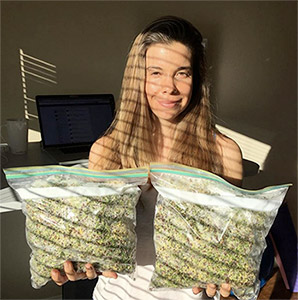
Dosage
Rhonda suggests that the best data we have on dosage comes from the clinical trials done. She references these 3 in her sulforaphane video:
- 60mg sulforaphane tablets (= 140g fresh broccoli sprouts) – Study showed sulforaphane slowed the doubling rate of a cancer biomarker (known as prostate specific antigen or PSA) by 86%
- 40mg sulforaphane sprout powder (= 100g fresh broccoli sprouts) – Study showed sulforaphane lowered serum triglycerides by 18% and lower oxidized LDL ratio by 13%. Overall, this reduced the trial participants atherogenic index by 50%.
- 40mg sulforaphane sprout powder (= 100g fresh broccoli sprouts) – Study showed sulforaphane reduced inflammation in type 2 diabetics: TNF-alpha by 11%, CRP by 16%.
These studies suggest you want to aim for between 40mg & 60mg sulforaphane (100g to 140g fresh weight sprouts) if you want to emulate their results. This is based on the approximation that 1 gram of fresh weight sprouts is equivalent to 0.425mg of sulforaphane.
To put this into perspective, the quart size Ball mason jars Rhonda uses yield approximately 280g fresh weight per jar when full – which brings 1 jar close to 120mg sulforaphane content.
Rhonda said (on her last Tim Ferriss podcast) she consumes up to 4 ounces (113g) of broccoli sprouts a few times per week.
In terms of consuming them, you’ll probably want to emulate Rhonda, who adds the sprouts to smoothies and blends them in her Blendtec – to mask the taste with other flavors. You want to avoid juicing, as this will discard the pre-biotic fiber that is beneficial to our gut microbiome.
Increasing Broccoli Sprouts Bioavailability
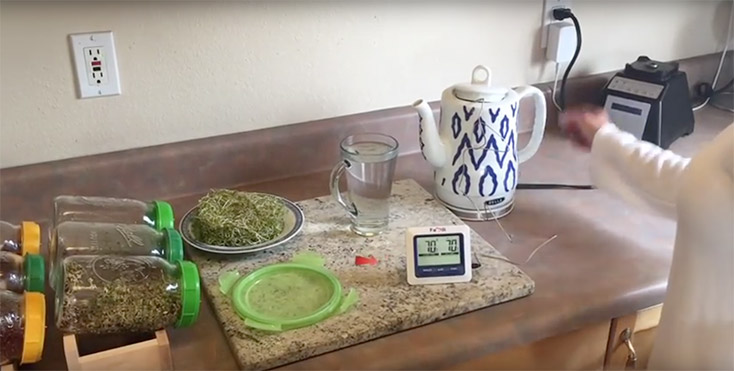
Rhonda had previously created a video on tripling the bioavailability of sulforaphane in the sprouts via heating. However, after discussing the process with John Hopkins researchers Jed Fahey, she has since stopped it – based on Jed suggesting that this is not necessarily. This also avoids the risk of overheating the sprouts, and therefore disabling the myrocinase enzyme – which would be sub-optimal.
Sulforaphane Supplements
Jed Fahey of John Hopkins University, one of the leading researchers in sulforaphane/NRF2, warns us to be careful of which supplement we use.
His lab, which has analyzed dozens of supplements over the years, has found that many are terrible, and don’t contain what they say they do. For more info on Jed, see Rhonda’s interview with him.
To complicate matters, there are 3 main ways to consume sulforaphane:
| Type | Bioavailability | Brands |
| Pure Sulforaphane | Average bioavailability of 70%* | Prostaphane & BROQ |
| Glucoraphanin + Myrosinase | Average bioavailability of 35%* | Avmacol |
| Glucoraphanin only | Average bioavailability of 10%* | Thorne Crucera-SGS |
* Bioavailability numbers come from Jed Fahey’s research at John Hopkins (source).
Below is a list of the sulforaphane supplements tested and used by Jed Fahey’s team at John Hopkins University in their clinical studies:
Pure Sulforaphane
Until recently there was only 1 company making a free-form stabilized version of sulforaphane, called Prostaphane.
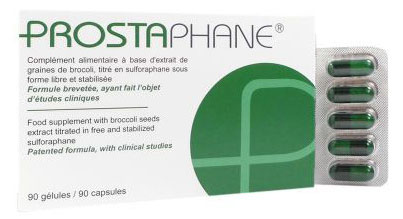
At the time it was only available in France, and Rhonda had to ship it over.
However, it’s now available in the US under the brand name BROQ.
Rhonda was using BROQ for a while but has since switched to Avmacol.
Rhonda notes that for some people, even taking 1 tablet (10 mg) with a meal can result in stomach discomfort. Therefore, as an alternative, she mentions that Avmacol may be kinder on the stomach.
This page of Broq’s site explains a bit more about their collaboration with the company behind Prostaphane (Nutrinov / Triballat Noyal).
BROQ contains 10mg of sulforaphane per capsule (the same as Prostaphane) and Rhonda currently takes 2 capsules per day (with a meal, never on an empty stomach).
Ideally splitting them up between 2 separate meals.
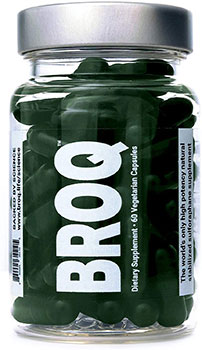
BROQ ships from USA to:
- USA, Canada, UK & Australia
For those elsewhere, a UK company called Vitality Pro now ships Prostaphane internationally (product link). Prostaphane is 10 mg per capsule also.
Glucoraphanin + Myrosinase – Avmacol
Avmacol contains glucoraphanin (sulforaphane glucosinolate) extracted from broccoli seeds, alongside the activation enzyme myrocinase.
It’s currently available in 2 strengths:
| Product | Glucoraphanin Content | Sulforaphane Content |
| Avmacol – Regular | ~15 mg | 5.25 mg* |
| Avmacol – Extra | ~30 mg | 10.5 mg* |
*Assuming 35% bioavailability
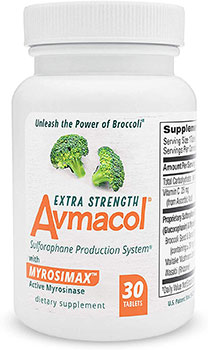
Glucoraphanin only – Crucera-SGS
The last sulforaphane supplement that has been tested by Jed Fahey and his team is Thorne’s Crucera-SGS.
This contains glucoraphanin (sulforaphane glucosinolate, or SGS), but doesn’t contain the additional myrocinase enzyme. Interestingly, our guts do contain bacteria that convert glucoraphanin into sulforaphane. The amounts vary from person to person, hence why some supplements add in mycrocinase to increase bioavailability.

In summary:
- The 3 supplements above have been tested and used in clinical trials by John Hopkins University – so we can trust they contain what they say, unlike many other broccoli sprout supplements that are ineffective.
- The most bioavailable supplement is Prostaphane/BROQ.
- The next most bioavailable product is Avmacol.
A benefit of using supplements over homegrown sprouts is for situations where risk of infection must be minimized – including pregnant mothers and those with compromised immune systems. Homegrown sprouts run the risk of bacterial contamination if they’re not kept completely sterile, whereas sprouts processed into supplements do not carry this risk.
Rhonda’s dosage: 2 tablets of Avmacol Extra per day
Moringa – another natural source
Rhonda started taking Moringa in 2020 – which stemmed from Jed Fahey’s research at Johns Hopkins. Moringa is derived from the leaves of the Drumstick Tree, which are harvested, dried and then powdered. It contains an isothiocyanate with similar properties to sulforaphane, called Moringin.
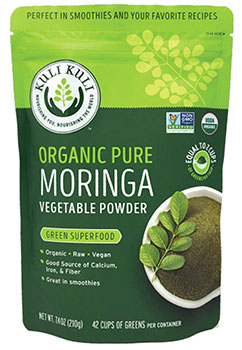
In Jed’s studies using Moringa, participants consumed it as a cold-brewed tea. This can be made by adding moringa to room temperature water and leaving to stand for at least 10 minutes. They suggest a ratio of 1:100, powder to water. So for example:
- 1 gram of moringa powder to 100 cc of liquid, or
- 5 grams of moringa powder per 8 ounces of liquid, or
- ½ teaspoon of moringa powder per 8 ounces of liquid
The reason for not making a hot tea, is that the myrocinase enzyme in moringa is sensitive to heat, and its important to preserve it.

^ Above image via Jed Fahey
In terms of which Moringa to use, Jed’s studies used Kuli Kuli Moringa (15% off coupon code here). He notes in their FAQs that excessive sunlight or heat after harvest will rapidly degrade some of the phytochemicals and vitamins of interest in the leaves – so it’s worth caution when sourcing.
Suggested dose of moringa?
Whilst quite a lot of money, time and research has been put into looking at sulforaphane and broccoli sprouts, Moringa research is still in its infancy.
To my knowledge there aren’t human studies that have robustly determined what dose of moringa we should be aiming at for various benefits.
The suggestion by Jed (see below) is to use at least a teaspoon of moringa powder for daily dosing.

^ Image via Twitter source
In Rhonda’s December 2021 Q&A she confirmed that there are no equivalency studies yet.
She says she personally uses a heaped tablespoon of moringa powder. Yes, tablespoon, not teaspoon – it’s quite a lot!
Roundup
So we’ve covered why sulforaphane might be of interest and the different forms that Rhonda takes it in.
If you’ve further questions, please leave them below in the comments.
References
- 1
